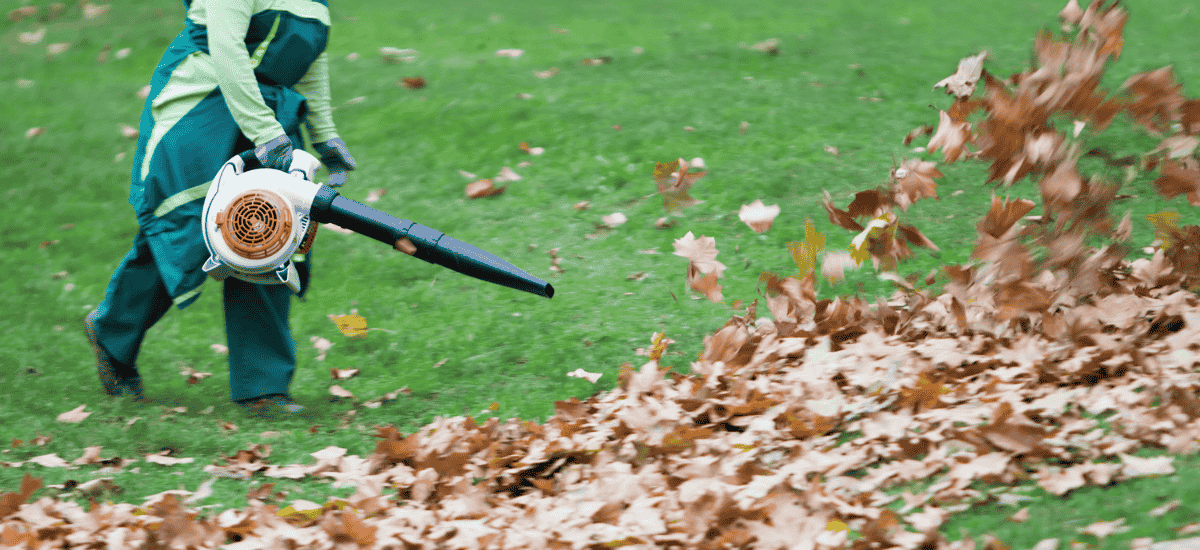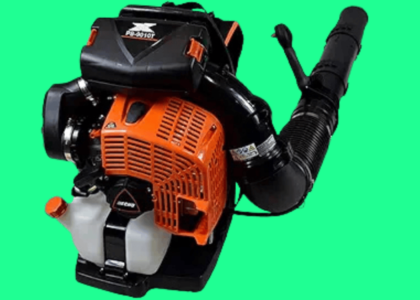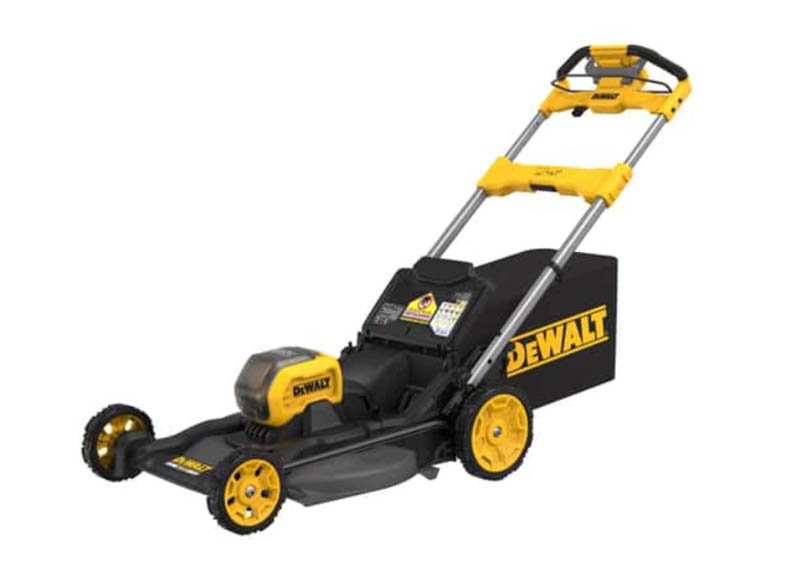Last Updated on August 20, 2025 by D. Ruddy
Staring at a wall of leaf blowers at the hardware store can feel like trying to read a foreign language. You see a sea of numbers, but two acronyms keep popping up: CFM and MPH. You know you need power, but what is power? Is it the sheer volume of air, or is it the blistering speed? This is the classic showdown that leaves many homeowners scratching their heads.
You’re not just buying a tool; you’re investing in a quicker, easier way to reclaim your yard from the clutches of autumn. Choosing the wrong one means frustration, extra hours of work, and a nagging feeling you didn’t get the right tool for the job. But what if you could walk into that store with the confidence of a seasoned pro, able to instantly tell which blower will make short work of your leaf piles and which will just push them around in circles?
That’s exactly what this guide will do for you. We’re going to demystify CFM and MPH once and for all. By the end, you’ll not only understand what they mean but also know precisely which one matters most for your yard. Let’s dive in and turn you into a leaf blower expert.
In a Hurry? The 30-Second Answer
For those who need to get back to their lawn, here’s the quick breakdown:
- CFM (Cubic Feet per Minute) is about VOLUME. Think of it as the width of your invisible broom. A higher CFM moves a larger pile of leaves at once, helping you clear big areas faster.
- MPH (Miles Per Hour) is about SPEED. Think of it as the force you use to push that broom. A higher MPH is better for dislodging heavy, wet, or stubborn debris like matted leaves and twigs.
The takeaway? You need a healthy balance of both, but if you have a large yard with lots of light, dry leaves, prioritize a higher CFM. If you frequently deal with wet, heavy leaves or need to clear debris from cracks in the pavement, a higher MPH will be your best friend.
Deep Dive: What is CFM on a Leaf Blower?
CFM, or Cubic Feet per Minute, is the single most important metric for understanding the workload capacity of a leaf blower. It measures the sheer volume of air the blower can push out of its tube every minute.
Imagine a giant, invisible box that is one foot wide, one foot long, and one foot tall. That’s one cubic foot. A leaf blower with a rating of 500 CFM can fill 500 of those invisible boxes with air in just sixty seconds.
Why Volume is King for Clearing Areas
Think of cleaning your yard like mopping the floor. You could try to clean a large kitchen floor with a tiny sponge, but it would take forever. You’d be much faster with a large mop head that covers more ground with every swipe.
CFM is your mop head.
- High CFM (e.g., 600-800+): This is like having a giant push broom. You can move massive piles of leaves across your lawn in a single pass. It creates a wide, powerful column of air that acts like an invisible rake, gathering huge quantities of material. This is the metric that directly translates to how fast you can clear a large, open space.
- Low CFM (e.g., 200-400): This is more like a handheld whisk broom. It’s great for small, precise jobs like clearing a patio, dusting off outdoor furniture, or getting leaves out of a small flower bed. Trying to clear a half-acre lawn with a low-CFM blower will be a slow, frustrating process.
A common misconception is that CFM is tied to the size of the nozzle. This is incorrect. The CFM rating is determined by the fan inside the blower. The fan will always move the same volume of air, regardless of the tube you attach to the end. The nozzle only changes how that air is delivered.
Bottom Line on CFM: If your main goal is to clear large areas of dry leaves quickly, a higher CFM is your most important number.
Deep Dive: What is MPH on a Leaf Blower?
MPH, or Miles Per Hour, is the metric that measures the speed at which air exits the blower’s tube. While CFM tells you how much air you’re moving, MPH tells you how hard that air is hitting the debris.
Let’s go back to our cleaning analogy. CFM was the size of your mop head, but MPH is the elbow grease you put into scrubbing a tough spot. You can have a giant mop, but if you don’t apply any pressure, you won’t lift a sticky spill.
MPH is the pressure.
Why Speed is Critical for Stubborn Debris
Think of a garden hose. If you turn on the water without a nozzle, a large volume of water (high CFM equivalent) flows out gently. It can water a wide area, but it won’t blast mud off your sidewalk. Now, put your thumb over the end. You haven’t changed the amount of water coming through the hose, but by forcing it through a smaller opening, the water shoots out at a much higher speed (high MPH equivalent). Now you can easily blast away dirt and grime.
This is exactly how MPH works in a leaf blower.
- High MPH (e.g., 180-250+): This is the “blasting power.” High-speed air has the force needed to lift heavy, wet leaves that are stuck to the ground. It’s also essential for clearing heavier debris like small twigs, acorns, and pebbles, or for blowing dirt out of cracks in your driveway.
- Low MPH (e.g., 100-150): This is a gentler force. It’s perfect for delicate jobs where you don’t want to send mulch flying out of your flower beds or blast dust everywhere. It will struggle with wet, matted leaves.
Unlike CFM, MPH is directly affected by the nozzle. Many leaf blowers come with a concentrator nozzle—a smaller, tapered attachment. This attachment doesn’t change the CFM (the fan is still moving the same volume of air), but it forces that air through a smaller exit, dramatically increasing its speed (MPH).
Bottom Line on MPH: If you battle with wet seasons, heavy oak leaves, or need to do powerful “cleaning” tasks in addition to moving leaves, a higher MPH is crucial.
The Big Showdown: What is Better in a Leaf Blower, CFM or MPH?
This is the ultimate question, and the honest answer is: it’s not about which is better, but about which is more important for your specific tasks. A great leaf blower has a strong combination of both.
CFM is the muscle to move the pile. MPH is the punch to lift the pile.
You can have all the muscle in the world (high CFM), but without a forceful punch (MPH), you can’t lift a heavy, wet pile of leaves off the ground. Conversely, you can have a lightning-fast punch (high MPH), but without enough muscle (CFM), you’ll only be moving a few leaves at a time.
Here’s how they balance out in the real world:
| Scenario | Priority Metric | Why? |
|---|---|---|
| Large yard with many light, dry leaves | High CFM | You need to move a massive volume of material. A wide column of air (high CFM) will clear the area in fewer passes, saving time. |
| Small patio, deck, and flower beds | Lower MPH | You need precision and control. High MPH will send dirt and mulch flying everywhere. A lower MPH gives you a gentler, more focused flow. |
| Wet, heavy leaves after a rainstorm | High MPH | You need the raw force to break the surface tension holding the wet leaves to the ground. CFM alone won’t be enough to lift them. |
| Cleaning gutters or cracks in pavement | High MPH | This requires a focused, high-speed jet of air to dislodge stubborn, packed-in debris. A concentrator nozzle is key here. |
| Professional landscaping | Both (High) | Professionals need the versatility to handle any job efficiently. They typically use backpack blowers with high ratings in both CFM and MPH. |
The Unofficial “Power Number”: A Quick Way to Compare
While manufacturers don’t advertise it this way, a quick way to get a rough idea of a blower’s overall power is to multiply its two main ratings.
CFM x MPH = Raw Power Score
Let’s look at the two models from the Reddit thread:
- Echo PB 2520 (Gas): 453 CFM x 170 MPH = 77,010
- Ego Backpack Blower (Battery): 600 CFM x 145 MPH = 87,000
Based on this simple calculation, the Ego backpack blower has a higher raw power score, suggesting it has more overall work capacity, even though its air speed is lower. This is because its significantly higher CFM (the amount of air it moves) more than makes up for its lower MPH. This user would be able to clear larger areas faster with the Ego.
Disclaimer: This is a simplified “back-of-the-napkin” calculation. It doesn’t account for fan efficiency or nozzle design, but it’s an excellent way to quickly compare two models on the shelf.
Going Deeper: Introducing the True Measure of Force
If you really want to get technical, there’s one metric that combines both CFM and MPH into a single, scientifically accurate number: Blowing Force, measured in Newtons (N).
While not always advertised, some manufacturers, especially those catering to professionals, will list the Newton rating. This is the single best measurement of a leaf blower’s true power because it accounts for both the volume (mass) of the air and its speed (acceleration).
- A good cordless handheld blower might have a rating of around 15-20 Newtons.
- A powerful professional backpack blower can exceed 40 Newtons.
If you see the Newton rating listed, it’s the most reliable number for an apples-to-apples power comparison. A blower with 20N is definitively more powerful than one with 15N, regardless of their individual CFM and MPH stats.
Beyond the Numbers: Other Factors That Matter
Choosing the perfect leaf blower isn’t just about CFM and MPH. Several other factors play a huge role in how the tool performs and how pleasant it is to use.
1. Power Source: Gas vs. Battery vs. Corded
- Gas-Powered:
- Pros: Typically offer the highest CFM and MPH ratings. The go-to for professional landscapers who need maximum power and all-day runtime.
- Cons: Loud, heavy, require fuel mixing and regular engine maintenance, and produce emissions.
- Battery-Powered (Cordless):
- Pros: The most popular choice for homeowners. They are quiet, lightweight, emission-free, and require virtually no maintenance. High-end models now rival the power of many gas blowers.
- Cons: Limited runtime based on battery size (having a second battery is highly recommended). Can be expensive upfront.
- Corded Electric:
- Pros: The lightest and most affordable option. Unlimited runtime as long as you’re plugged in.
- Cons: Your range is limited by the length of your extension cord, which can be cumbersome to manage around trees and obstacles. Generally have lower power than gas or high-end battery models.
2. Blower Type: Handheld vs. Backpack
- Handheld Blowers:
- Ideal for: Yards under one acre, quick clean-ups on decks and driveways.
- Why: They are lightweight and highly maneuverable. Perfect for grabbing for a quick job. However, carrying even a 10-pound tool for an extended period can cause arm fatigue.
- Backpack Blowers:
- Ideal for: Large properties (1+ acres), commercial use, or anyone needing to work for long periods.
- Why: They distribute the weight across your shoulders and back, making them far more comfortable for extended use. This design also allows for a larger, more powerful motor or engine, which is why backpack models almost always have the highest CFM and MPH ratings.
3. Nozzle Design
The shape of the nozzle is crucial. As we discussed, it’s the primary way to manipulate the MPH of your blower.
- Standard Nozzle: A wide, round opening that is great for maximizing the area covered. It keeps the MPH lower, which is ideal for moving large piles of dry leaves without scattering them everywhere.
- Concentrator Nozzle: A flattened, tapered nozzle that constricts the airflow. This significantly boosts the MPH, creating a powerful jet of air perfect for scraping wet leaves off pavement or cleaning out crevices.
Many blowers come with both, giving you the versatility to switch between high-volume clearing and high-power blasting.
Real-World Scenarios: Which Blower is Right for You?
Let’s put all this knowledge into practice. Find the scenario that best describes your needs.
Scenario 1: The Small Townhouse Yard
- Your Yard: You have a small patio, a short driveway, and a few flower beds. Leaf cleanup takes you 20-30 minutes.
- Your Debris: Mostly dry leaves from a neighbor’s tree, grass clippings.
- What You Need: You don’t need massive power. A corded or small battery-powered handheld blower is perfect. Look for something in the 200-400 CFM range with a moderate MPH of 120-150. High power will just create a bigger mess.
Scenario 2: The Classic Suburban Half-Acre
- Your Yard: A standard suburban lawn with a mix of open areas and landscaping beds. You have several mature trees that drop a lot of leaves.
- Your Debris: Mostly dry to damp leaves, some twigs, and acorns.
- What You Need: This is the sweet spot for a powerful cordless handheld or a light-duty backpack blower. You should prioritize volume to clear the open spaces efficiently. Look for a blower with 500-700 CFM and an MPH of 150-200. Make sure it comes with a concentrator nozzle for when you need that extra punch.
Scenario 3: The Wooded Acreage
- Your Yard: You have a large property with dozens of trees, including heavy-leafed varieties like oaks and maples. Cleanup is a multi-hour, multi-weekend affair.
- Your Debris: Everything. Massive piles of dry leaves, thick layers of wet matted leaves, sticks, and pine needles.
- What You Need: Don’t mess around. You need a high-end battery or gas-powered backpack blower. Here, both numbers are critical. You need a very high CFM (700+) to move the enormous volume of leaves and a very high MPH (200+) to lift the heavy, wet layers from the bottom of the pile.
Your Ultimate Leaf Blower Buyer’s Checklist
Before you head to the store or click “buy now,” run through this quick checklist.
- Assess Your Yard Size: Be realistic. A bigger yard demands a higher CFM.
- Identify Your Debris Type: Are your leaves light and fluffy, or heavy and wet? This will determine how much MPH you need.
- Choose Your Power Source: Do you value power above all (Gas), convenience and quiet (Battery), or light weight and low cost (Corded)?
- Decide on the Form Factor: Will you be working for long periods (Backpack) or doing quick clean-ups (Handheld)?
- Check the “Power Score”: Multiply CFM x MPH for a quick comparison between models.
- Look for the Newton Rating: If it’s available, this is your most accurate measure of true power.
- Verify Nozzle Attachments: Does it include both a standard and a concentrator nozzle for versatility?
- Consider the Battery Ecosystem: If you’re going cordless, do you already own other tools from the same brand (like Ego, Ryobi, or DeWalt)? Sticking with one brand means your batteries are interchangeable, saving you money.
By understanding the dynamic duo of CFM and MPH, you’re no longer just a consumer; you’re an informed buyer ready to choose the perfect tool to conquer your yard. Happy blowing!





